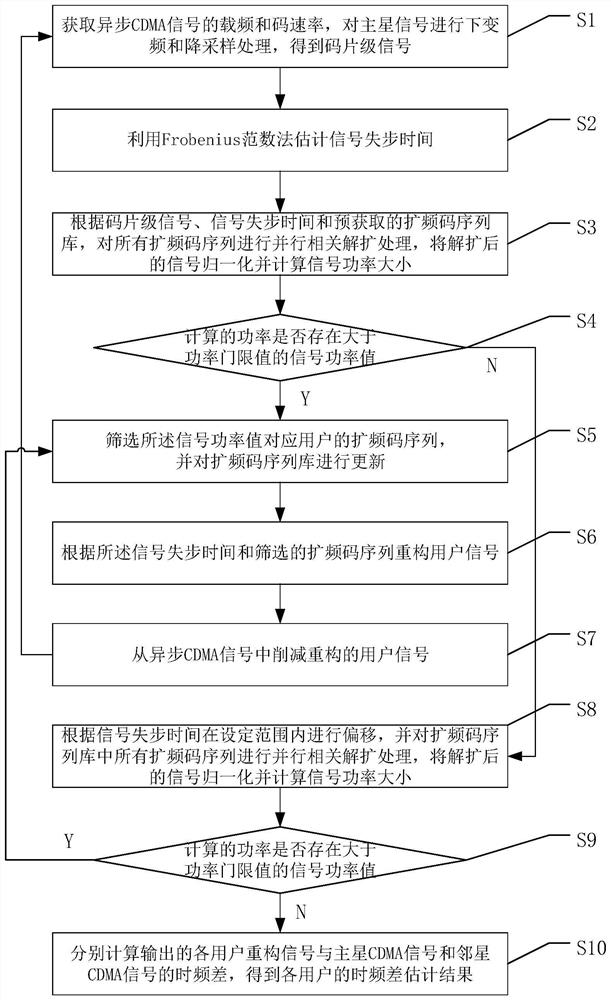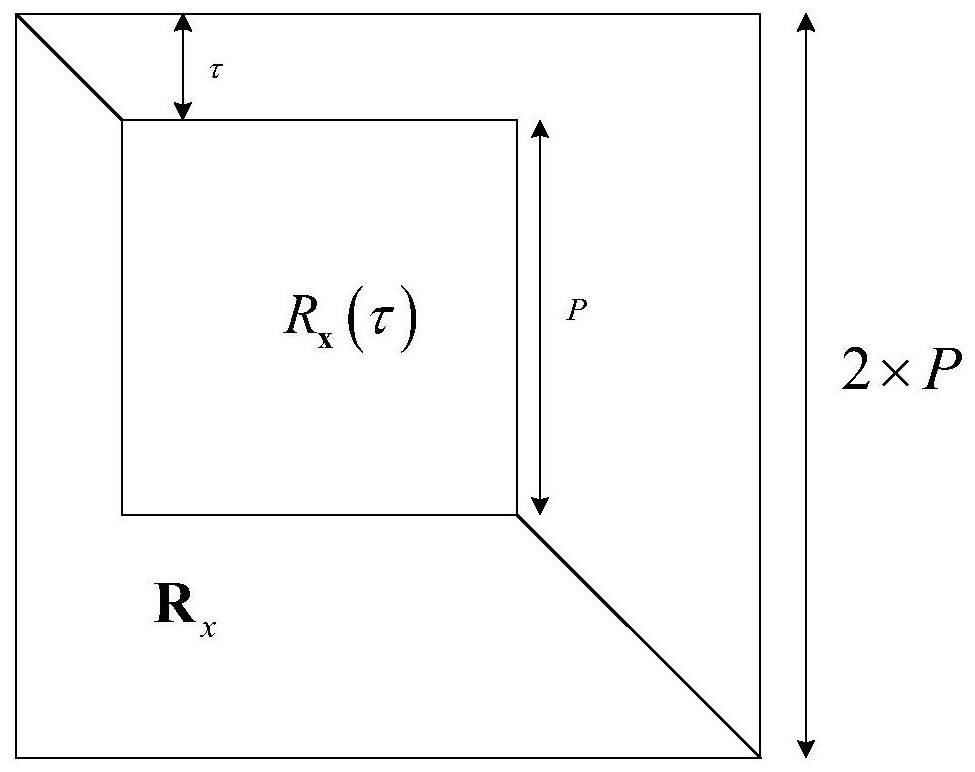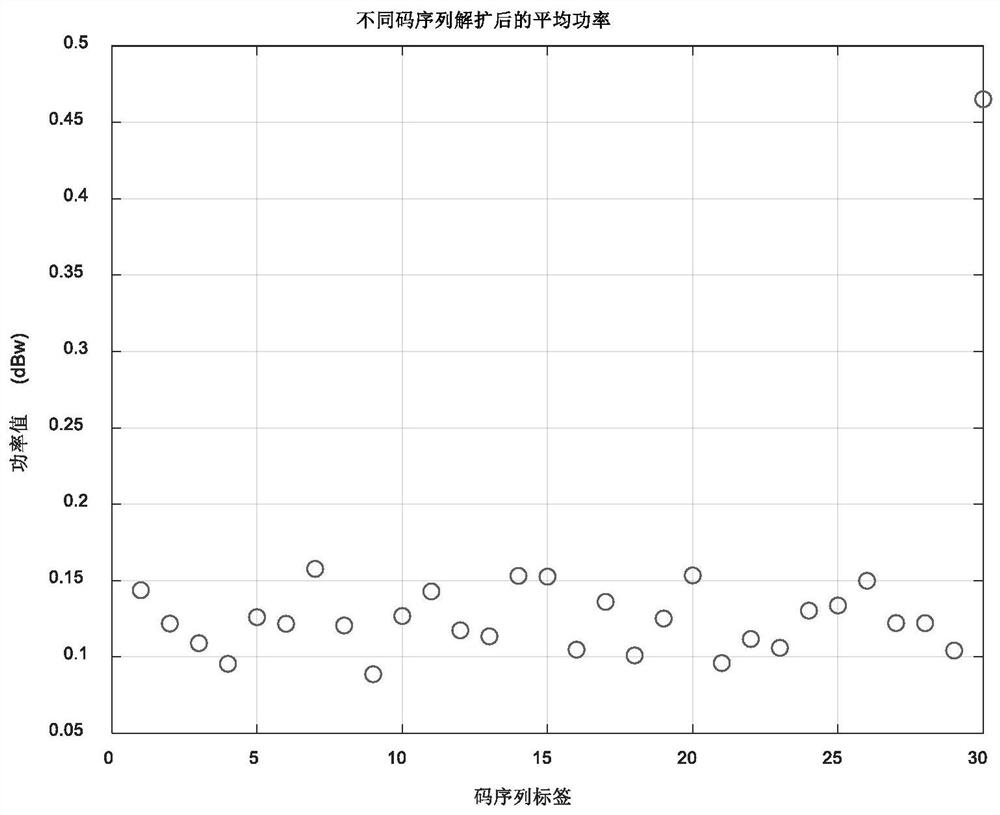Asynchronous DS-CDMA signal time-frequency difference parameter estimation method
A DS-CDMA and parameter estimation technology, applied in transmission systems, electrical components, etc., can solve problems such as multi-peak ambiguity, achieve the effects of improving accuracy, solving mutual interference, and avoiding multi-peak ambiguity
- Summary
- Abstract
- Description
- Claims
- Application Information
AI Technical Summary
Problems solved by technology
Method used
Image
Examples
Embodiment Construction
[0060] The specific embodiments of the present invention are described below so that those skilled in the art can understand the present invention, but it should be clear that the present invention is not limited to the scope of the specific embodiments. For those of ordinary skill in the art, as long as various changes Within the spirit and scope of the present invention defined and determined by the appended claims, these changes are obvious, and all inventions and creations using the concept of the present invention are included in the protection list.
[0061] Such as figure 1 As shown, the embodiment of the present invention provides a method for estimating a time-frequency difference parameter of an asynchronous DS-CDMA signal, including the following steps S1 to S10:
[0062] S1. Obtain the carrier frequency and code rate of the asynchronous CDMA signal, perform down-conversion and down-sampling processing on the main star signal, and obtain a chip-level signal;
[006...
PUM
 Login to View More
Login to View More Abstract
Description
Claims
Application Information
 Login to View More
Login to View More - Generate Ideas
- Intellectual Property
- Life Sciences
- Materials
- Tech Scout
- Unparalleled Data Quality
- Higher Quality Content
- 60% Fewer Hallucinations
Browse by: Latest US Patents, China's latest patents, Technical Efficacy Thesaurus, Application Domain, Technology Topic, Popular Technical Reports.
© 2025 PatSnap. All rights reserved.Legal|Privacy policy|Modern Slavery Act Transparency Statement|Sitemap|About US| Contact US: help@patsnap.com



